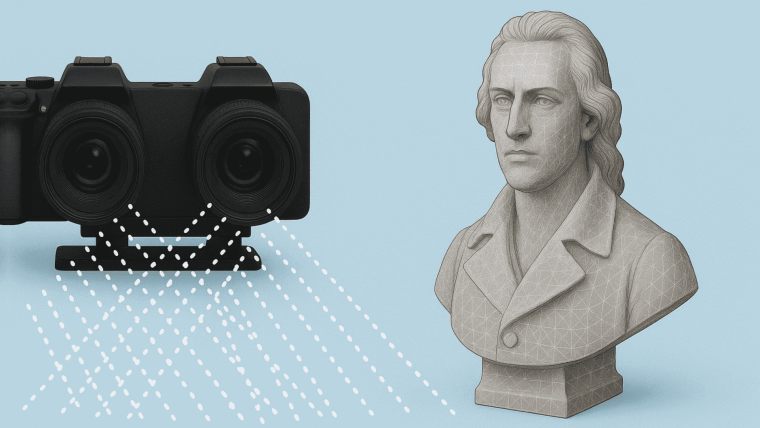
Stereophotogrammetry with structured illumination combines passive stereo imaging with active pattern projection to enable high-precision three-dimensional surface reconstruction. The technique is based on triangulation between at least two calibrated cameras observing an object from different vantage points. Correspondences between image points are established across views to compute depth via geometric intersection of the associated rays.
In classical stereo setups, reliable correspondence matching can be challenging for texture-poor or reflective surfaces. To address this limitation, structured illumination introduces a known sequence of light patterns—commonly sinusoidal phase shifts or binary encoded masks—projected onto the object surface. These patterns introduce artificial features that facilitate dense and unambiguous correspondence identification, even in regions lacking intrinsic contrast.
During acquisition, both cameras capture the illuminated scene synchronously. The observed deformation of the projected patterns is analyzed to retrieve per-pixel phase or code information, which is then linked to spatial coordinates through geometric calibration of the system. The fusion of epipolar geometry with structured light decoding allows for sub-pixel accurate surface measurements and reduces reconstruction artifacts.
This approach is particularly advantageous in experimental settings where non-contact, high-resolution 3D acquisition is required. In our application, stereophotogrammetry with structured illumination serves as a foundational tool for quantitatively capturing complex sample geometries, enabling downstream analyses of deformation, growth, or morphological variation under controlled conditions.